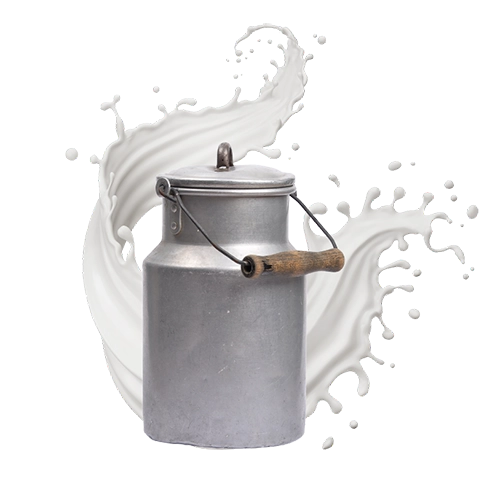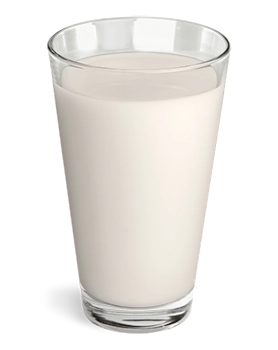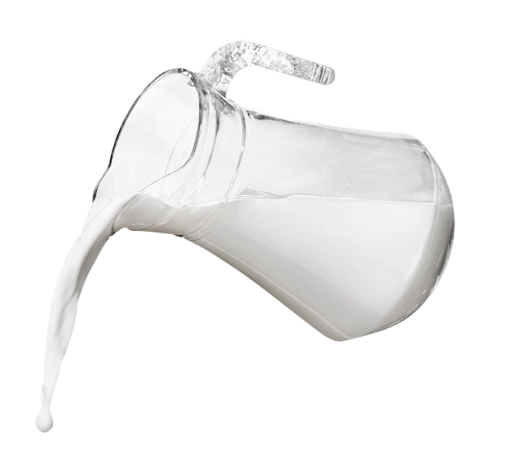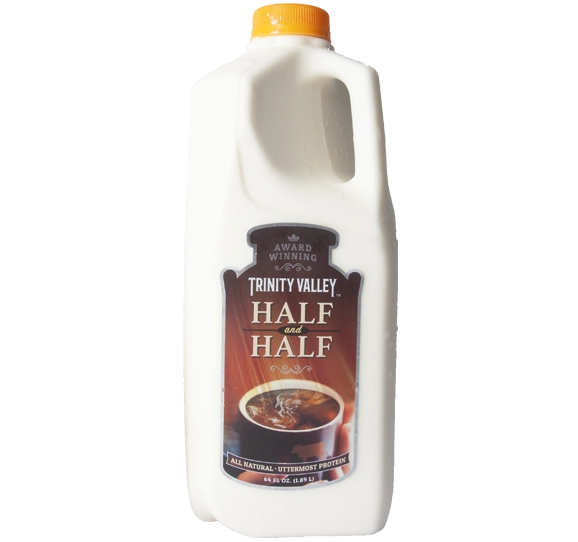
UDDER STUFF
Most have grown up with homogenized milk because it is the standard found in grocery stores, but here at Trinity Valley, we took a different approach. Our milk is pasteurized at low temperatures and bottled directly at Trinity Valley, and our ‘Creamline’ products remain non-homogenized, meaning it comes straight from the cow. This more natural form of milk allows the body to more easily digest the cream and utilize the fat for energy and nutrients – the way it was intended!


COMMON QUESTION:
WHAT IS CREAMLINE?
Creamline milk, also known as non-homogenized milk, is a natural form of milk that retains its rich cream layer. Unlike homogenized milk, which is processed to break down the fat molecules and evenly distribute the cream throughout, Creamline milk allows the cream to rise to the top, creating a distinct separation. This is a sign of pure, unaltered milk straight from the cow.


Benefits of Creamline Milk
-
Natural Creaminess: The cream that rises to the top adds a rich, full flavor to your milk, offering a creamy texture that’s unmatched by homogenized varieties.
-
Better Nutrient Absorption: Since the milk is not processed to alter the natural structure of the fat, your body can better digest the cream and use the healthy fats for energy and nutrients.
-
Preserved Freshness: Our Creamline milk undergoes low-temperature pasteurization, preserving its natural taste and quality, while maintaining essential nutrients.
How Creamline Milk Differs from Homogenized Milk
-
No Alteration of Fat: Homogenized milk is processed to break down fat molecules and create a uniform consistency, which eliminates the natural separation of cream. In contrast, Creamline milk preserves the natural separation, giving you a more authentic milk experience.
-
Fuller Flavor: The unaltered fat in Creamline milk provides a richer, more flavorful taste compared to homogenized milk, which can be more neutral in flavor.
Important Note: Because the cream naturally separates and rises to the top of Creamline milk, it is essential to shake the bottle before use to redistribute the cream and ensure a smooth, creamy texture in every pour. This simple step allows you to enjoy the full benefits of our fresh, non-homogenized milk.

COMMON QUESTION:
WHAT IS GENTLE PASTEURIZATION?
Low Heat Pasteurization, also known as vat pasteurization, involves heating milk to a lower temperature for a longer period. This gentler method preserves more of the milk’s natural flavor and nutrients compared to standard pasteurization, as it avoids the higher temperatures that can alter the taste and nutritional content of the milk.
Pasteurization vs. Low Heat Pasteurization
Pasteurization is a process used to heat milk to a specific temperature to kill harmful bacteria and pathogens without significantly affecting the milk’s taste or nutritional value. The traditional method involves heating the milk to 161°F (72°C) for about 15 seconds, followed by rapid cooling. This process ensures the safety of the milk and extends its shelf life.
Low Heat Pasteurization, also known as vat pasteurization or low-temperature long-time (LTLT) pasteurization, involves heating milk to a lower temperature, typically around 145°F (63°C), for a longer period—about 30 minutes. This gentler method preserves more of the milk’s natural flavor and nutrients compared to standard pasteurization, as it avoids the higher temperatures that can alter the taste and nutritional content of the milk.
Key Differences:
–Temperature & Time: Standard pasteurization uses higher temperatures for a shorter time, while low heat pasteurization uses lower temperatures for a longer period.
– Taste & Nutrient Preservation: Low heat pasteurization better preserves the milk’s natural flavor and more delicate nutrients, offering a fresher, creamier taste.
– Safety: Both methods effectively kill harmful bacteria, ensuring the milk is safe to drink.
At our farm, we use low heat pasteurization to ensure you receive milk that is both safe and retains its rich, fresh flavor.

GENTLY PASTUERIZED
HALF AND HALF
Our Half and Half is a smooth blend of premium cream and whole milk, homogenized and Grade A pasteurized. Perfect for adding a creamy richness to your coffee, tea, and recipes, it’s the ideal balance of flavor and texture.


Stay Connected
Get Fresh Updates & Dairy Delights Delivered to Your Inbox!
